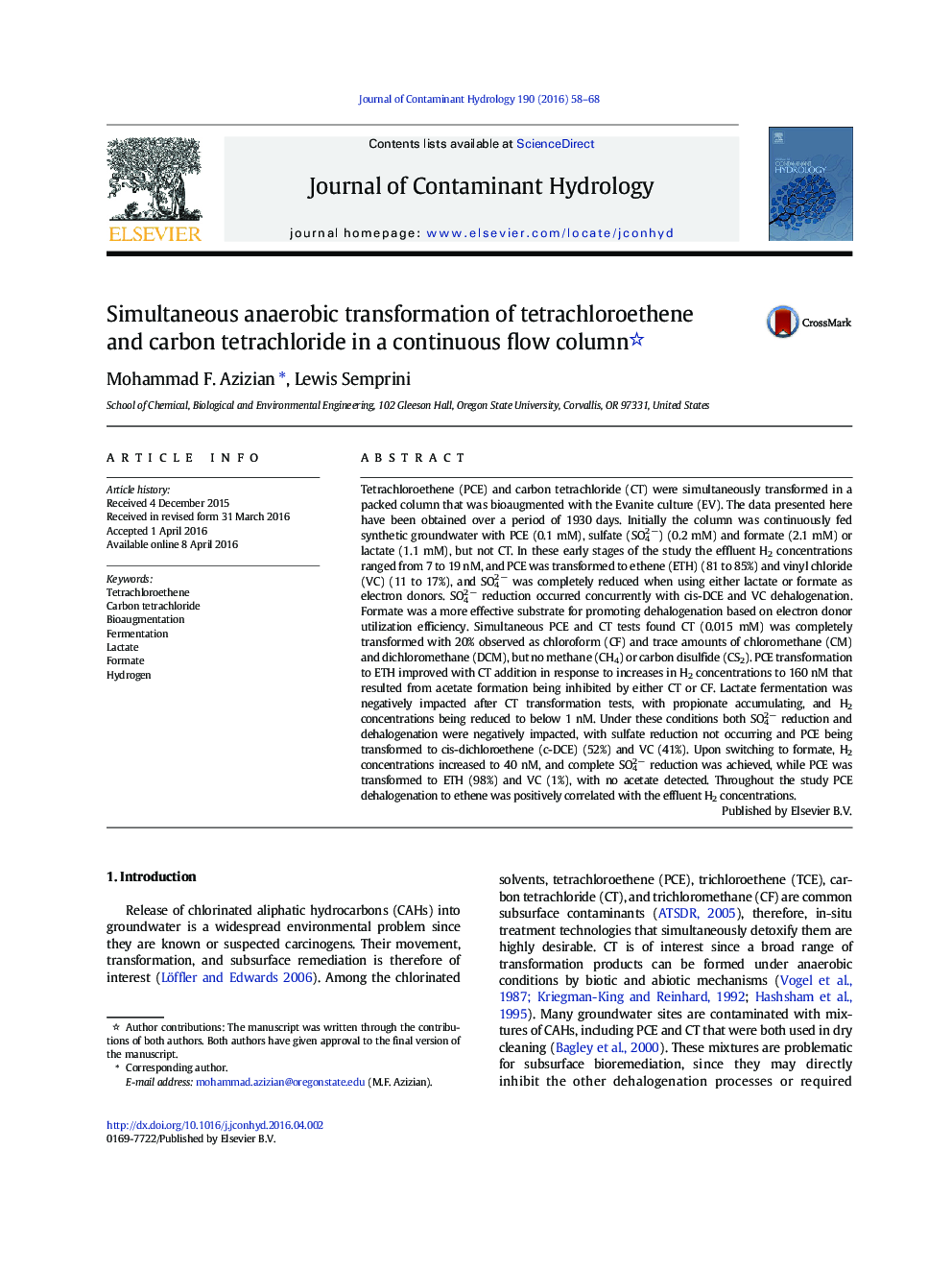| Article ID | Journal | Published Year | Pages | File Type |
|---|---|---|---|---|
| 4546361 | Journal of Contaminant Hydrology | 2016 | 11 Pages |
•PCE was effectively dehalogenated to ethene with and without addition of CT.•The data presented here have been collected over a period of 1930 days.•CT transformation to CF inhibited homoacetogenesis with formate as a substrate.•Propionate fermentation was greatly inhibited after the exposure to CT and CF.•Effective PCE to ethene was achieved after the exposure to CT and CF with formate.
Tetrachloroethene (PCE) and carbon tetrachloride (CT) were simultaneously transformed in a packed column that was bioaugmented with the Evanite culture (EV). The data presented here have been obtained over a period of 1930 days. Initially the column was continuously fed synthetic groundwater with PCE (0.1 mM), sulfate (SO42 −) (0.2 mM) and formate (2.1 mM) or lactate (1.1 mM), but not CT. In these early stages of the study the effluent H2 concentrations ranged from 7 to 19 nM, and PCE was transformed to ethene (ETH) (81 to 85%) and vinyl chloride (VC) (11 to 17%), and SO42 − was completely reduced when using either lactate or formate as electron donors. SO42 − reduction occurred concurrently with cis-DCE and VC dehalogenation. Formate was a more effective substrate for promoting dehalogenation based on electron donor utilization efficiency. Simultaneous PCE and CT tests found CT (0.015 mM) was completely transformed with 20% observed as chloroform (CF) and trace amounts of chloromethane (CM) and dichloromethane (DCM), but no methane (CH4) or carbon disulfide (CS2). PCE transformation to ETH improved with CT addition in response to increases in H2 concentrations to 160 nM that resulted from acetate formation being inhibited by either CT or CF. Lactate fermentation was negatively impacted after CT transformation tests, with propionate accumulating, and H2 concentrations being reduced to below 1 nM. Under these conditions both SO42 − reduction and dehalogenation were negatively impacted, with sulfate reduction not occurring and PCE being transformed to cis-dichloroethene (c-DCE) (52%) and VC (41%). Upon switching to formate, H2 concentrations increased to 40 nM, and complete SO42 − reduction was achieved, while PCE was transformed to ETH (98%) and VC (1%), with no acetate detected. Throughout the study PCE dehalogenation to ethene was positively correlated with the effluent H2 concentrations.
Graphical abstractFigure optionsDownload full-size imageDownload as PowerPoint slide
